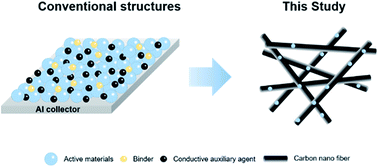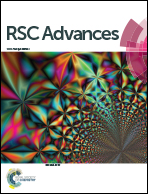Influence of carbonization temperature and press processing on the electrochemical characteristics of self-standing iron oxide/carbon composite electrospun nanofibers†
Abstract
Lithium ion batteries (LIBs) are popular energy storage devices used in various fields such as electronics, mobilities, and power devices. In recent years, LIBs have been used in applications that require high energy densities to improve device performance metrics such as weight saving and miniaturization, as well as for reducing the cost. In this study, we propose two solutions for meeting the high energy density demands of these applications, namely (i) the use of active materials with high energy density and (ii) reduction of non-active materials such as the conductive agent, binder, separator, and electrolyte in the battery systems. In this study, we investigate the role of carbonization temperature and press processing of iron oxide/carbon composite nanofibers in improving the electrochemical characteristics of these electrode materials. The results of the study indicate that increasing the carbonization temperature improves the energy density per unit weight and unit volume as well as the rate capabilities, whereas press processing improves the energy density per unit volume, but reduces the rate capabilities. The investigation is useful for improving the performance of iron oxide/carbon composite nanofibers as the anode for LIBs.



 Please wait while we load your content...
Please wait while we load your content...